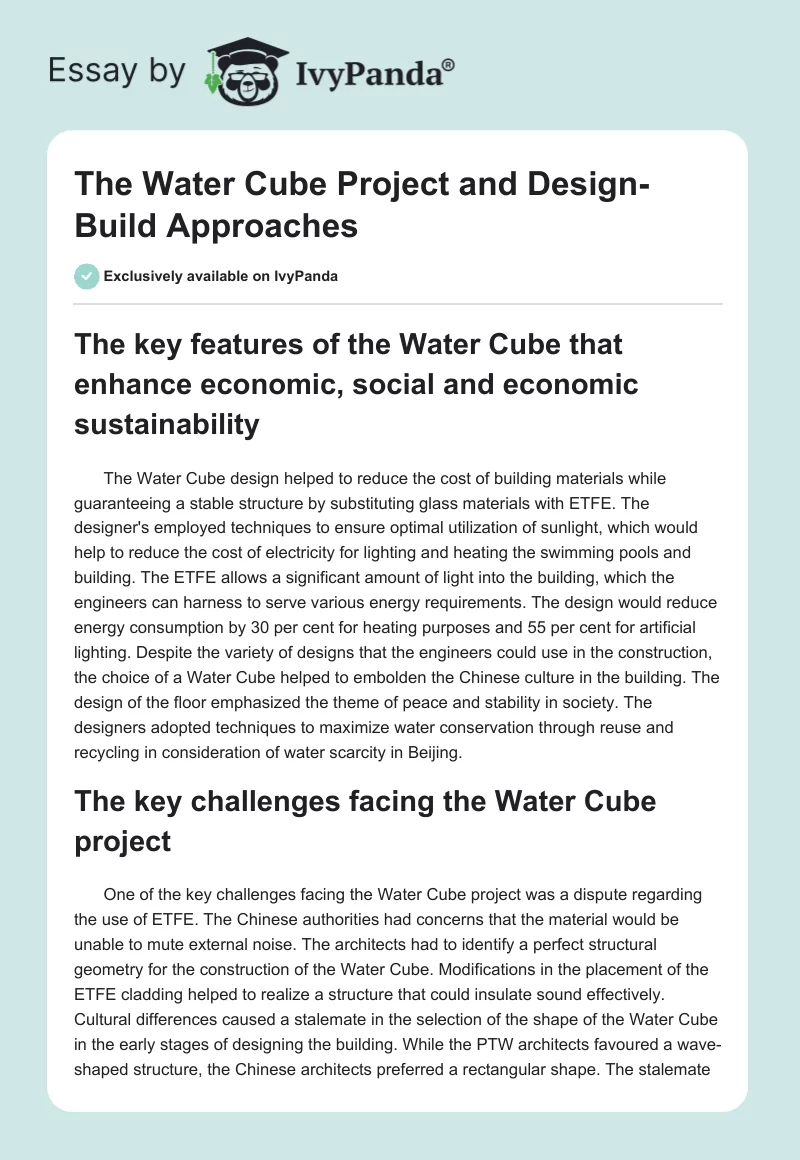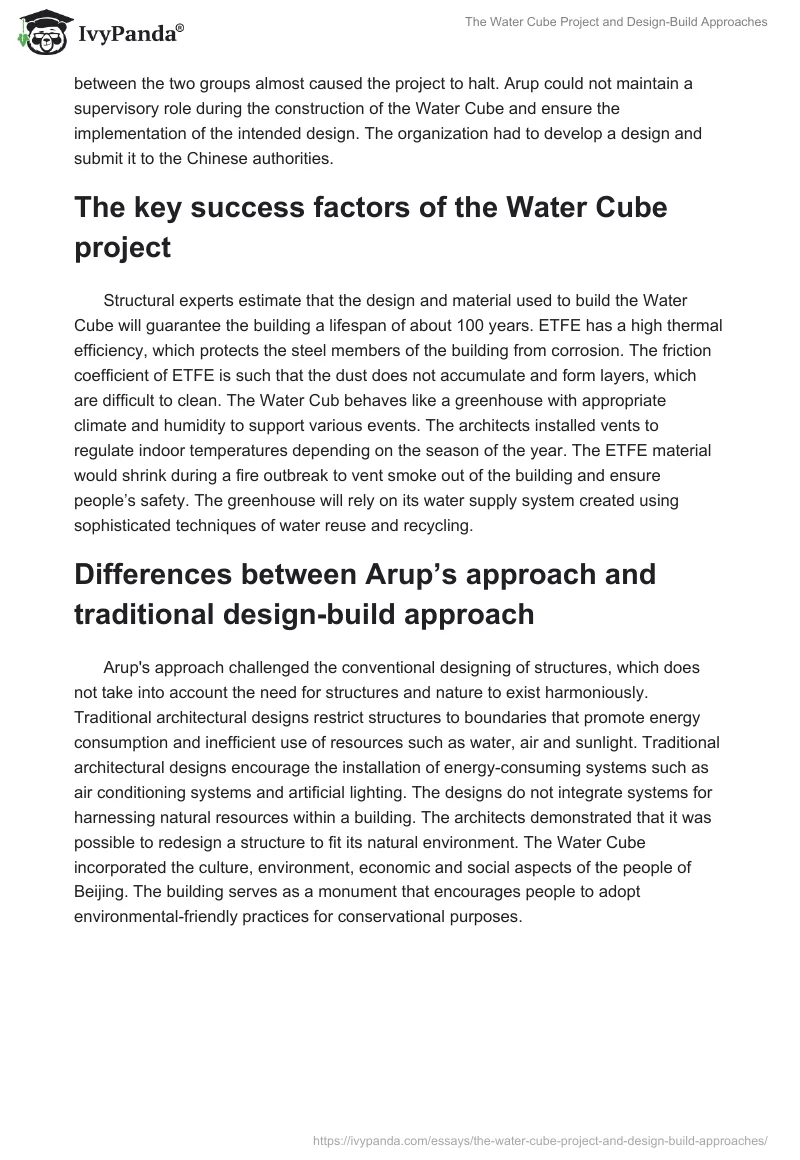The key features of the Water Cube that enhance economic, social and economic sustainability
The Water Cube design helped to reduce the cost of building materials while guaranteeing a stable structure by substituting glass materials with ETFE. The designer’s employed techniques to ensure optimal utilization of sunlight, which would help to reduce the cost of electricity for lighting and heating the swimming pools and building. The ETFE allows a significant amount of light into the building, which the engineers can harness to serve various energy requirements. The design would reduce energy consumption by 30 per cent for heating purposes and 55 per cent for artificial lighting. Despite the variety of designs that the engineers could use in the construction, the choice of a Water Cube helped to embolden the Chinese culture in the building. The design of the floor emphasized the theme of peace and stability in society. The designers adopted techniques to maximize water conservation through reuse and recycling in consideration of water scarcity in Beijing.
The key challenges facing the Water Cube project
One of the key challenges facing the Water Cube project was a dispute regarding the use of ETFE. The Chinese authorities had concerns that the material would be unable to mute external noise. The architects had to identify a perfect structural geometry for the construction of the Water Cube. Modifications in the placement of the ETFE cladding helped to realize a structure that could insulate sound effectively. Cultural differences caused a stalemate in the selection of the shape of the Water Cube in the early stages of designing the building. While the PTW architects favoured a wave-shaped structure, the Chinese architects preferred a rectangular shape. The stalemate between the two groups almost caused the project to halt. Arup could not maintain a supervisory role during the construction of the Water Cube and ensure the implementation of the intended design. The organization had to develop a design and submit it to the Chinese authorities.
The key success factors of the Water Cube project
Structural experts estimate that the design and material used to build the Water Cube will guarantee the building a lifespan of about 100 years. ETFE has a high thermal efficiency, which protects the steel members of the building from corrosion. The friction coefficient of ETFE is such that the dust does not accumulate and form layers, which are difficult to clean. The Water Cub behaves like a greenhouse with appropriate climate and humidity to support various events. The architects installed vents to regulate indoor temperatures depending on the season of the year. The ETFE material would shrink during a fire outbreak to vent smoke out of the building and ensure people’s safety. The greenhouse will rely on its water supply system created using sophisticated techniques of water reuse and recycling.
Differences between Arup’s approach and traditional design-build approach
Arup’s approach challenged the conventional designing of structures, which does not take into account the need for structures and nature to exist harmoniously. Traditional architectural designs restrict structures to boundaries that promote energy consumption and inefficient use of resources such as water, air and sunlight. Traditional architectural designs encourage the installation of energy-consuming systems such as air conditioning systems and artificial lighting. The designs do not integrate systems for harnessing natural resources within a building. The architects demonstrated that it was possible to redesign a structure to fit its natural environment. The Water Cube incorporated the culture, environment, economic and social aspects of the people of Beijing. The building serves as a monument that encourages people to adopt environmental-friendly practices for conservational purposes.


